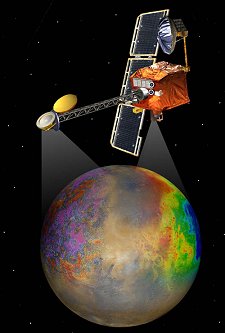
 |
|
| A sheep's pen bears a precautionary sign to keep the public out | |
LONDON, England -- The British government has delayed plans for the mass slaughter of healthy animals in the fight against foot-and-mouth disease.
As opposition to the idea mounted, Agriculture Minister Nick Brown said the cull would not now take place until the scientific reasons behind it had been explained to the farmers concerned.
The plan calls for the slaughter of healthy sheep and pigs within three kilometres (two miles) of infected sites in the worst-affected areas of Cumbria, in northern England, and southern Scotland.
Chief Veterinary Officer, Jim Scudamore, will visit the region on Monday. However, the government insisted on Saturday the mass slaughter is necessary.
Scudamore's deputy Richard Cawthorne said: "If we don't take some form of decisive action there is a fear that the disease, instead of being contained in sheep, will spread and become airborne."
|
||||||||||||
The Royal Society for the Prevention of Cruelty to Animals has added its voice to the campaign against the plan.
"If there are speculative culls the government risks killing the wrong sheep in the wrong place," said the group's chief veterinarian, Chris Laurence.
The lobby group Farmers For Action has threatened legal action to stop the slaughter.
"This is all-out war -- and I don't use those words lightly," said spokesman David Handley. "If this is the way they want to handle it I'm afraid they've got a fight on their hands."
However the National Farmers' Union supports the government.
NFU President Ben Gill said: "I'm not happy having to slaughter any animals, I'm distressed at the state we're in. But I have to recognise this is an action we have to implement."
The number of confirmed cases of foot-and-mouth in the UK reached 282 on Saturday.
The government hopes the drastic cull will allow officials to re-open some of the parks, pathways and tourist attractions closed in an attempt to stem the outbreak.
Tourism officials say the closures are costing the industry as much as 250 million pounds ($360 million) a week.
Culture Secretary Chris Smith said on Saturday that ministers were looking at ways of helping to the tourist sector.
"We will be seeing if there is more the government can do. What I cannot do is produce an instant cheque book," he said during a visit to England's Lake District, normally a magnet for visitors.
Police in the Lake District county of Cumbria said Friday they had confiscated firearms from a farmer who allegedly threatened veterinary officials who came to kill his livestock.
|
||||
Foot-and-mouth disease is highly contagious and affects animals including cattle and sheep. While harmless to humans, it destroys the economic value of livestock.
Although only one case has so far been confirmed in mainland Europe -- in France -- the United States has imposed a blanket ban on imports of livestock and meat from all 15 countries in the European Union.
Gerry Kiely, Agriculture Counsellor for the European Commission's delegation in Washington, said the U.S. had gone too far.
He said the ban was "disproportionate," adding: "On issues like this, where the U.S. leads, there is always the risk of others following and its effect on other markets."
The Associated Press contributed to this report.
|
 |
 March
19, 2001 -- When NASA's 2001 Mars Odyssey launches in April to
explore the fourth planet from the Sun, it will carry a suite of
scientific instruments designed to tell us what makes up the Martian
surface, and provide vital information about potential radiation hazards
for future human explorers. March
19, 2001 -- When NASA's 2001 Mars Odyssey launches in April to
explore the fourth planet from the Sun, it will carry a suite of
scientific instruments designed to tell us what makes up the Martian
surface, and provide vital information about potential radiation hazards
for future human explorers.
"The launch of 2001 Mars Odyssey represents a milestone in our exploration of Mars -- the first launch in our restructured Mars Exploration Program we announced last October," said Ed Weiler, Associate Administrator for Space Science at NASA Headquarters. "Mars continues to surprise us at every turn. We expect Odyssey to remove some of the uncertainties and help us plan where we must go with future missions." Right: An artists concept of the 2001 Mars Odyssey Mission. Credit: NASA/JPL [more] Set for launch April 7 from Cape Canaveral, Odyssey is NASA's first mission to Mars since the loss of two spacecraft in 1999. Other than our own Moon, Mars has attracted more spacecraft exploration attempts than any other object in the solar system, and no other planet has proved as daunting to success. Of the 30 missions sent to Mars by three countries over 40 years, fewer than one-third have been successful.
Odyssey is part of NASA's Mars Exploration Program, a long-term robotic exploration initiative launched in 1996 with Mars Pathfinder and Mars Global Surveyor. "Odyssey will help identify and ultimately target those places on Mars where future rovers and landers must visit to unravel the mysteries of the red planet," said Jim Garvin, lead scientist for NASA's Mars Exploration Program. NASA's latest explorer carries three scientific instruments to map the chemical and mineralogical makeup of Mars: a thermal-emission imaging system (THEMIS), a gamma ray spectrometer (GRS) and a Martian radiation environment experiment (MARIE). THEMIS will map the planet with high-resolution thermal images and give scientists an increased level of detail to help them understand how the mineralogy of the planet relates to the landforms they see. The part of Odyssey's imaging system that takes pictures in visible light will see objects with a clarity that fills the gaps between the Viking orbiter cameras of the 1970s and today's high-resolution images from Mars Global Surveyor. 
Above: THEMIS's infrared capabilities will significantly improve the data from TES, a similar instrument on Mars Global Surveyor. This image shows how Arizona's Verde Valley would appear to both instruments. [more information] Like a virtual shovel digging into the surface, Odyssey's gamma ray spectrometer (GRS) will allow scientists to peer into the upper few centimeters of Mars's crust to measure many elements, including the amount of hydrogen that exists. Because hydrogen is most likely present in the form of water-ice, the spectrometer will be able to measure permanent ground ice and how that changes with the seasons. "For the first time at Mars, we will have a spacecraft that is equipped to find evidence for present near-surface water and to map mineral deposits from past water activity," said Steve Saunders, 2001 Mars Odyssey project scientist at JPL. "Despite the wealth of information from previous missions, exactly what Mars is made of is not fully known, so this mission will give us a basic understanding about the chemistry and mineralogy of the surface."
Right: Since space radiation presents an extreme hazard to crews of interplanetary missions, MARIE will attempt to predict anticipated radiation doses that would be experienced by future astronauts and help determine possible effects of Martian radiation on human beings. [more information] After completing its primary mission, the Odyssey orbiter will provide a communications relay for future American and international landers, including NASA's Mars Exploration Rovers, scheduled for launch in 2003.
|
|
|
|||||||||||
|
Write
Us |
Mir Plunges into the Drink
Unlike NASA's Skylab station, which fell to Earth essentially uncontrolled in 1979, scattering its remains in the Indian Ocean and the Australian Outback, Mir's demise was skillfully planned and executed by the Russian Space Agency. In late January, the agency sent a Progress module to the abandoned station to act as its executioner. With a series of carefully timed firings, the module's thrusters slowed Mir down, causing it to drop into Earth's atmosphere. The final blow came just after midnight on Friday for those following the progress in the eastern United States, when a 20-minute burn pushed Mir into its suicide fall over the South Pacific. Mir was the pride of the Russian space program, but the country no longer had the financial ability to keep the space outpost aloft while maintaining its commitment to the International Space Station currently under construction. Mir long outlived its planned five years in space and was showing its age by 1997 when a couple of mishaps threatened the lives of its crewmembers. |
||
For the Russian Space Agency, for the men and women who spent time aboard Mir, and for space enthusiasts everywhere, March 23 was a day flavored with sadness as the world said goodbye to an old space comrade. But the Russian space program can take pride in its safe retirement of the largest man-made object ever to orbit Earth and look to the future offered by the International Space Station, knowing the lessons of Mir will enable the new station's success. |